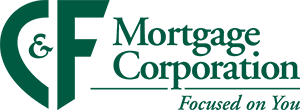The state of the real estate market over the past two years has enticed many to consider a home refinance. With low interest rates and sky-high home values, it’s no wonder refinancing has been a popular choice! There are a few types of refinances, but today, we’re focusing specifically on a cash-out refinance option. According to a September 2021 report released by Black Night, the average mortgage holder has $173,000 in tappable equity.
What is a Cash-Out Refinance?
Whether you’ve lived in your house for a while or your home value has increased dramatically over the past few years, it may be time to consider a refinance. Most of the time, homeowners opt to refinance when interest rates lower or if shortening their loan term (for example, going from a 30-year to a 15-year mortgage). In a cash-out refinance, you can take the difference between your original loan and your new loan in cash (less any applicable closing costs).
Typically, your lender will want you to maintain at least 20% equity in your home when taking out a cash-out refinance, so keep that in mind when calculating how much money you’ll have to work with. People may opt for a cash-out refinance when using the cash for a specific project or item. It’s beneficial to determine how much you need to borrow before going through the process, so you won’t borrow more equity from your home than needed.
What are the Benefits of a Cash-Out Refinance?
As mentioned above, most homeowners choose a cash-out refinance to put the money toward a big project or purchase. While you can put the money toward nearly anything you’d like, these are some of the more common reasons homeowners opt for a cash-out refinance:
1. Making Home Improvements
Whether you’re tackling home projects because it’s needed or just because you’d like to give your home a facelift, tapping into your home’s equity is a great way to pay for these pricey projects.
2. Buying a Vacation Home
Especially as of late, purchasing a home away from home is a popular choice – it’s often a great investment for your future. One thing to note, though, is you’ll most likely need to put 10% down (at minimum) – which is why some homeowners opt to dip into their primary home’s equity when purchasing a second home.
3. Consolidating Debt
Debt in the form of credit cards, student loans, auto loans, medical bills, and more can add up quickly. If you happen to have a fair amount of equity in your home, you may find it beneficial to borrow against it to pay down your debt to eliminate it as quickly as possible. You can also consolidate most of your debt into a single loan when refinancing your mortgage.
4. Making Large Purchases
It doesn’t have to be material purchases – life experiences like paying for a college education or planning a wedding can be very expensive, too! Many of these large types of purchases will pay off greatly over time, so it’s well worth it to tap into your home’s equity to make them become a reality.
5. Paying for an Emergency
Life happens – from an unexpected medical bill to a critical home repair and many things in between – and sometimes you’ll need to tap into your home’s equity to get through it. The great thing about a cash-out refinance is that you can opt to borrow only the amount you need and nothing more.
If you think a cash-out refinance might be a good fit for you, get in touch with C&F Mortgage today to learn how we can work with you to achieve your financial goals. Our team of local industry experts is here for you and will guide you through the process from start to finish!
Edited 4/9/2021. The information contained herein (including but not limited to any description of C&F Mortgage Corporation and its lending programs and products, eligibility criteria, interest rates, fees and all other loan terms) is subject to change without notice. Restrictions apply. This is an advertisement and not a commitment to lend. C&F Mortgage Corporation NMLS# 147312 Equal Housing Lender.

